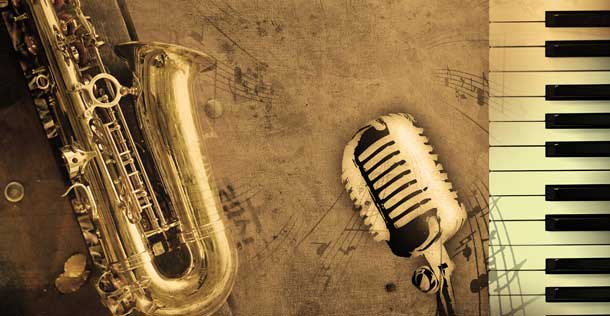In 2002, the National Museum of American History declared April Jazz Appreciation Month, or JAM. This year, to help encourage an appreciation of jazz history, we dug deep into our archives and found five articles by three jazz musicians who offer behind-the-scenes perspectives on what a career in jazz looked like from the ’20s to the ’50s.
Paul Whiteman Builds His Jazz Orchestra
In this first of a three-part series from 1926, “The King of Jazz” Paul Whiteman and “The First Lady of Radio” Mary Margaret McBride detail Whiteman’s discovery of his love for jazz and the hardships and lucky breaks that ultimately led to the creation and popularity of the Paul Whiteman Orchestra.
Jazz History: Paul Whiteman, George Gershwin, and the Stale Bread Orchestra
In Part II of the series, Paul Whiteman tells about his orchestra’s first European tour and his big gamble after he returned to the U.S. That gamble, an all-jazz concert titled “An Experiment in Modern Music,” featured the first public performance of George Gershwin’s Rhapsody in Blue and is today considered a defining event of the Jazz Age. With that concert, and this Post contribution, Whiteman helped establish jazz’s place on the continuum of the musical arts.
Paul Whiteman’s Orchestra and the Future of Jazz
In Part III, Whiteman offers readers a closer look at the musicians in his orchestra and talks about his role in their music-making. He concludes his contribution to the Post with thoughts on the future of jazz and jazz education in America.
The Hard Life of a Jazz Man
In 1939, after recovering from a medical emergency brought on by overwork, jazz clarinetist and bandleader Artie Shaw offered his candid — some might say cynical — views of the music business and of jazz in particular.
From Gimmick Street to Carnegie Hall
In this story from 1954, jazz vibes player Lionel Hampton recounts how he got his big break thanks to the King of Swing, Benny Goodman. That opportunity would lead to the formation of one of the greatest swing bands of the era, the erosion of racial barriers in music, and the lifelong friendship of two jazz legends.
Become a Saturday Evening Post member and enjoy unlimited access. Subscribe now



